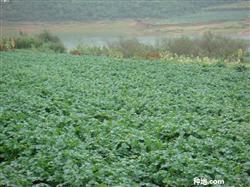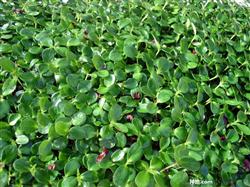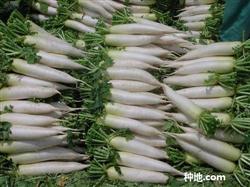What is the problem of radish fertilization now?

What is the problem of radish fertilization now? Please introduce the following problems in the fertilization of current radish: first, in view of the existing problems and principles of fertilization, in view of the imbalance between light potassium fertilizer and nitrogen, phosphorus and potassium, unreasonable fertilization period, insufficient application of organic fertilizer and insufficient attention to trace element fertilizer, the following fertilization principles are put forward: 1. According to soil fertility conditions and target yield, optimize the amount of nitrogen, phosphorus and potassium fertilizer, pay special attention to adjust the amount of nitrogen and phosphorus fertilizer and increase the application of potassium fertilizer; 2. The contents of available manganese, zinc, boron, aluminum and other trace elements in calcareous soils in northern China are relatively low, so attention should be paid to the supplement of these trace elements. The rational application of organic fertilizer plays an obvious role in increasing the yield and improving the quality of radish, avoid using organic fertilizer that is not fully mature into farmland, and advocate the application of mature farm manure or commercial organic fertilizer. 4. Fertilizer application should be combined with high-yield and high-quality cultivation techniques, especially with drought resistance, water saving and drainage management measures. Second, radish fertilization suggestions 1. The target yield is about 4500 kg / mu, applying organic fertilizer 2Mu3 or human feces, urine and biogas slurry 2000,000kg per mu, nitrogen fertilizer (N) 12MUE 14kg / mu, phosphate fertilizer (P2O5) 5Mel 7kg / mu, potash (K20) 1214kg / mu. The target yield is about 3000 kg / mu, the application of organic fertilizer is 2 square meters / mu, nitrogen fertilizer (N) is 10 kg / mu, phosphate fertilizer (P205) is 6 kg / mu, potash fertilizer (K20) is 10 kg / mu. The target yield is about 1500 kg / mu, and the application of organic fertilizer, nitrogen fertilizer, phosphate fertilizer and potash fertilizer is 0.5ml / mu, 8kg / mu, 5kg / mu and 10kg / mu respectively. Guxiu organic fertilizer was all applied as base fertilizer, solid organic fertilizer 100% as base fertilizer, human feces, urine and biogas slurry as topdressing for a small amount and many times; 40% of the total nitrogen fertilizer was used as base fertilizer, and 60% of the total nitrogen fertilizer was applied as topdressing in rosette stage and early stage of fleshy root growth. Phosphorus and potassium fertilizer was all applied as base fertilizer, or 2kg-3 potash fertilizer as base fertilizer, and 1can3 was applied in the early stage of fleshy root growth. If the base fertilizer does not apply organic fertilizer, it can be increased by 5kg / mu of nitrogen fertilizer and 3kg / mu of potash fertilizer. For fields with boron and other trace element deficiency, or fields that have shown symptoms of boron deficiency in previous years, 1 kg of borax per mu can be applied before sowing, or 0.5% borax or boric acid solution is sprayed on the leaves in the middle and later stages of radish growth, spraying every 5.6 days for 3 times in a row. Click for more radish planting techniques click to get more vegetable planting techniques
- Prev

How can radish increase production?
How to plant radish buds to produce high yield? Please point out radish bud, is formed by radish seed germination fat tender seedlings, its hypocotyls 6~8 cm long, cotyledons plump taste spicy, nutritious. Seed selection should be full of seeds, such as big green radish, red heart, full garden flower seeds, green manure radish, etc.; requirements for seed selection
- Next

Why did the fleshy root of radish break?
How to grow radish with high yield? For high yield, please refer to the following planting techniques: (1) Land selection: radish should be cultivated in fields that consume less fertilizer and more organic matter and are free of the same diseases and insect pests. Autumn and winter radish stubble is suitable for melons and eggplant fruits, except for the above-mentioned fields in suburban counties.
Related
- Where is it suitable to grow horseradish in China? it is expected to see the middle altitude horseradish in Alishan.
- How to prevent tomato virus disease reasonably? (Control methods included)
- Many people like to plant towel gourd on the balcony. What are the main points of this method and management?
- What crops can chili peppers be mixed with?
- Fertilization techniques and matters needing attention in Tomato
- What are the grafting techniques for peach seedlings in spring?
- Harm and control methods of root swelling disease of Chinese cabbage
- What are the pests of sweet potatoes? How to prevent and cure it?
- Symptoms, causes and Control methods of navel Rot in Tomato
- The cause of "Cucumber rotten bibcock" in Farmers' planting Cucumber and its Control Plan

